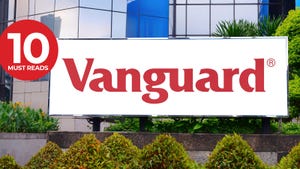Create a Business Development Process that WorksCreate a Business Development Process that Works
Three ways to help scale and grow

When you get right down to it, growth is the one thing a business must consistently foster to thrive. Growth does more than bring money to a firm—it brings hope. When the principals see that they can scale their business and gain value, growth can bring hope to those who have invested substantially, over time, in the success of the firm. Growth can also encourage key staff members, because as the company grows, they see that their careers can advance and that an equity stake could also materialize at some point.
Developing a culture of healthy growth at your firm may be easier if you develop a systematic approach to nurture, sustain and analyze every relationship, from your top clients and referral sources to your lukewarm leads. Here are some of the tools and techniques to help you develop such an approach.
Start With Your Pipeline
Make pipeline review a ritual. Set a meeting—weekly is ideal—and don’t let any essential team members miss it. At this meeting, talk about which prospects are moving and which are stalled. Give each prospect an agreed-upon category (for example: Qualified Lead, Non-Qualified Lead, Ideal Prospective Client, Center of Influence), and keep them on a spreadsheet. Make sure everyone at your firm uses the same terms, with the same definitions, so you have a consistent way of looking at your sales funnel. Also, make sure that you have an actionable next step for nurturing every lead, a date for that step and an owner of the process. The step can be as simple as “email Jim our newsletter when he gets back to town August 20” or “invite Janice to our next wine tasting.” The important thing is nurture the lead—do not to let good leads be forgotten.
This advice may seem simplistic, but it may be harder to implement than it sounds. Systematizing a sales approach and making it a new habit can be a major undertaking at many firms. You may need to play around with the way you classify prospective clients, or adjust the format of the spreadsheet you use to track them. Take the time you need to get your process right. The good news is that, once everyone at your firm is comfortable with the new system, your pipeline and next steps can be logged into the company’s CRM workflow, helping to take business development to the next level of organization.
Another way to look at your pipeline is to ask, which leads worked out? What do these new clients have in common? Look carefully at your successes, and “the ones who got away.” Talk about wrong-fit leads that filtered in and, in retrospect, took more time and energy than they should have. You’ll get new insights into which elements of your sales process are working, and who responds best to your product and service offerings.
Think of Your Clients as Prospects
All your clients need to be re-engaged periodically. You may already do that with “touches”: email updates, meetings, client events, reports or the occasional check-in call. But it can be healthy to think of your clients as prospects. Maybe they have additional assets: other accounts, perhaps a 401(k) to be rolled over, an inheritance that may eventually occur. Make a point to learn about those assets and track the client’s life. You want to be top of mind when a triggering event occurs, and too many advisors take it for granted that their clients are 100 percent happy. It may be best to ask in your business development meetings: Have we done everything possible to educate our clients on what we do for them and why that is important? Have we become complacent in any way? What more can we do to build deeper relationships with our clients now?
This can be part of your client segmentation process. Grouping your clients as A, B or C (or Platinum, Gold and Silver, or whatever names you like) can be about a lot more than assets under management. You can segment them by life stage, which can help you sort out service needs; by their social influence, which could be a way to bring new prospects to your door; You or even by how pleasant they are to work with. The important thing is to have a multidimensional view of your client base.
The more you know about your clients, the greater chance you have to connect with them in a compelling way. Follow them on social media so you know who’s changing jobs (that could mean a rollover to invest, or tax-management issues if they have to sell options), who’s getting married (a good time to converse about blending families and financial realities), who has kids who have completed their education (a good time to offer the graduate a budgeting lesson—especially if there are a lot of loans). Segmenting by life stage may also help you come up with winning ideas for client events.
Map Your Value
Once you’ve brought your prospects onboard and made them clients, do they know what to expect? Can your clients explain how you help them?
A very powerful tool for explaining how your planning process can help improve your clients’ lives is a road map of the first year of your engagement. Once again, this will start with a spreadsheet and could end up becoming a one-sheet or infographic. Categorize every activity your firm does on your clients’ behalf. Some of this will be visible to them—the discovery process, the goals-based financial planning, the asset allocation, the investment decisions, etc. But many more will be invisible: the compliance process, the portfolio reviews and investment screening, the continuing education, etc. Teaching clients what takes place at your firm will help them understand the true breadth of your activities on their behalf—and help them communicate those activities to their friends and colleagues.
Once you’ve listed those activities, place them on a timeline. What happens quarterly, monthly or even weekly? How long does it take to complete a holistic financial plan? These activities should go into a calendar, which you can print out as an 11 inch by 17 inch “placemat” and share with new clients. It will give them a clear sense of how you can help bring order and clarity to their lives, and give you a conversational tool. The discussion should also help to explain shared accountability, roles and responsibilities, and so forth.
For example, if you say that in Month 2 of your engagement you will create an asset allocation that includes their 401(k) and any accounts that are held away, you’ll have to deliver—but you’ll also be counting on your clients to provide you with statements. That’s a reason to stay in close touch. By the end of the year you can have clients who know exactly how well they’ve been served. And you may also be able to tap them to help fill your pipeline, renewing the growth process which can benefit all. It would also be good to create a “Recurring Year” plan and to provide the new road map to your client, along with in-depth discussion, at their annual reviews.
Brian Stimpfl is the senior vice president of Scottrade® Advisor Services. He oversees program strategy, technology, business development and operations of the business unit.
About the Author
You May Also Like







